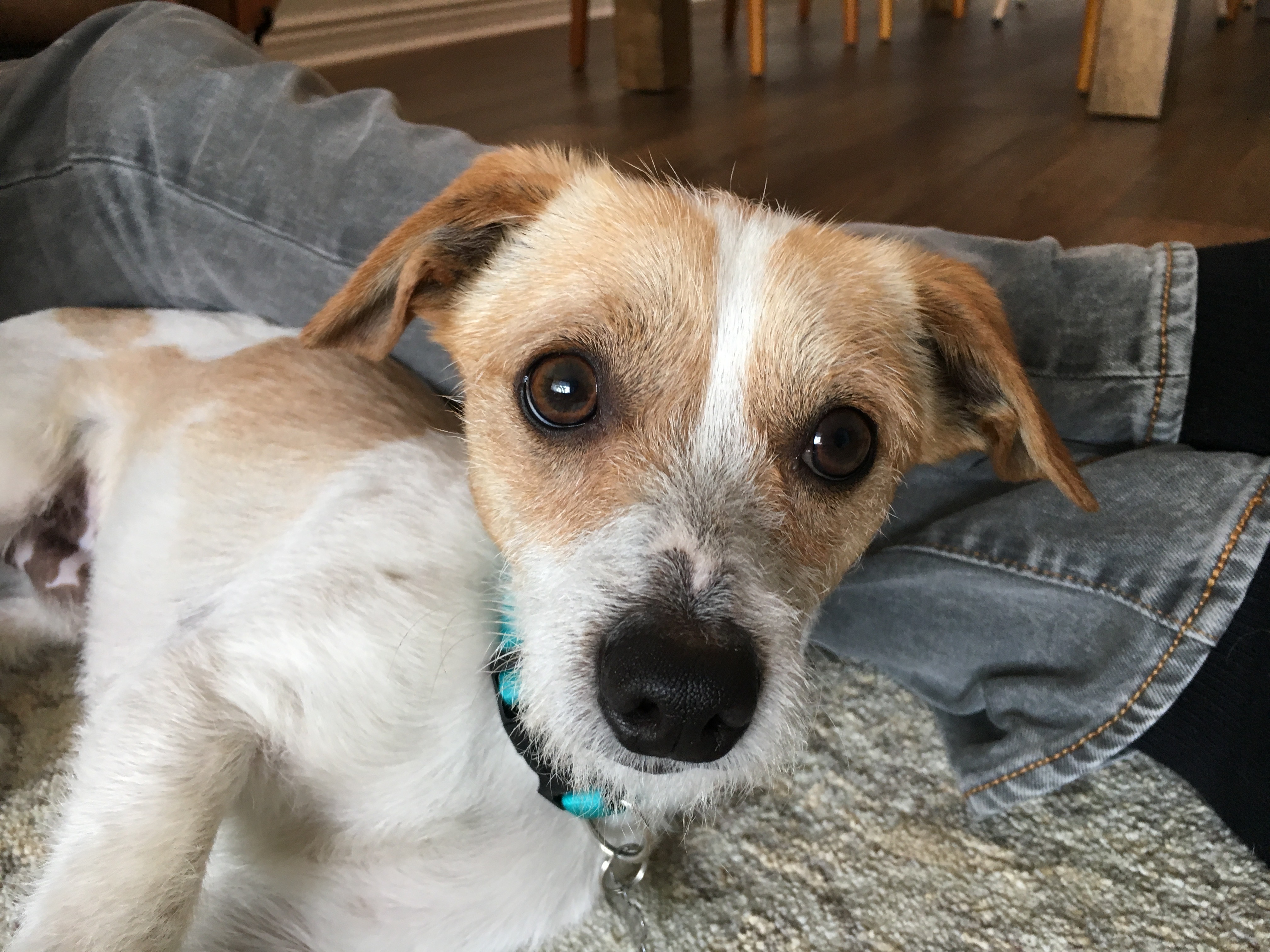Positive Kennel Training Helps a Jack Russell with Separation Anxiety
By: David Codr
Published Date: May 7, 2018
For this Santa Monica dog training session we did some kennel training with Sunny, a 2 year-old Jack Russell mix who barks a lot, is anxious and suffers from Separation Anxiety.
Sunny’s guardians reached out for help about a week after adopting him when they saw he had trouble being alone and liked to bark when upset. Since I was booked up for a month in advance, we did a hour long video Skype session to help them get started. On that call, I shared a number of positive dog training tips like petting with a purpose, passive training and the importance of rules and structure.
As a Santa Monica Dog Behavior expert, I have found that dogs who have a case of separation anxiety are often on the clingy side. They follow their guardians around everywhere and nudge or paw for attention often. Most people comply with a pet or some attention, but this often results in a few problems; they get confused about their status or position in the pack, thinking they are equal to or superior in rank to their humans (which can make some dogs feel responsible for them).
Another problem is the dog is often in a nervous, scared or anxious state of mind when they reach out for help. And because anything your dog is doing when you pet it is what you are rewarding, many people unintentionally make things worse.
I explained that you can touch a dog without petting to provide comfort without enhancing the unbalanced state of mind the dog is in at the time. Even better is to redirect the dog into a desired position or to follow a command. This redirects the dog into an action mode, distracting it away from what it was dwelling on. It also allows you to reward the dog, albeit for something else.
To help dogs who have separation anxiety and follow their guardians around everywhere, I have found that training a dog to stay is quite helpful. This link shows a video where i teach a dog to stay, drop it, leave it and feet which should all help Sunny.
Once the stay skill is mastered, Sunny’s guardians will be able to help him “practice” being alone for progressively longer periods of time, but with the knowledge that the human is still in the home (just out of sight). They key is to make the stay time increase very progressively, so that the dog is almost unaware that its getting longer each time. And of course, if the dog fails a step, backing up one step to practice a little more on an easier version.
Asking Sunny to stay while the humans get up to get a glass of water, change clothes, use the rest room and events longer in duration will help him get used to being alone while will help with his separation anxiety.
Although Sunny would go into his kennel, he wasnt a super fan and protested when left alone in it. The stay practice detailed above will help with part of this problem, but I have another kennel training exercise I developed I want to see his guardians practicing with him. You can watch his first go round for this crate training exercise below.
Just like the stay exercise, the key to this positive kennel training activity is to progressively increase the length of time the dog is in the kennel. First with the door open, then closed and not latched, then secured, then while secured while the humans were in another room.
While they are doing the kennel training, they should avoid locking Sunny in the kennel until they finished the kennel training outlined in the above video.
I also ran through how the guardians can desensitize Sunny to the various triggers that are associated with the humans leaving. Picking up and setting down keys, sunglasses, work tools, etc that are associated with the humans leaving all need to be practiced without leaving so the connection is not something the dog keys on.
Sunny also liked to bark at sounds outside the home. I showed the guardians how they can use some counterconditioning to help Sunny stop barking at things he hears outside his new home.
When you have a dog with Separation Anxiety, adding rules and structure can be very helpful as it shrinks the dog’s world. Combined with desensitization, practice being alone, making the dog earn its attention (petting with a purpose) and rewarding desired behaviors will all play roles in helping Sunny get over his separation anxiety.
To help the guardians remember all the dog behavior secrets I shared in this at home dog training session, we filmed a roadmap to success video you can watch below.
Categorized in: Dog Behavior


